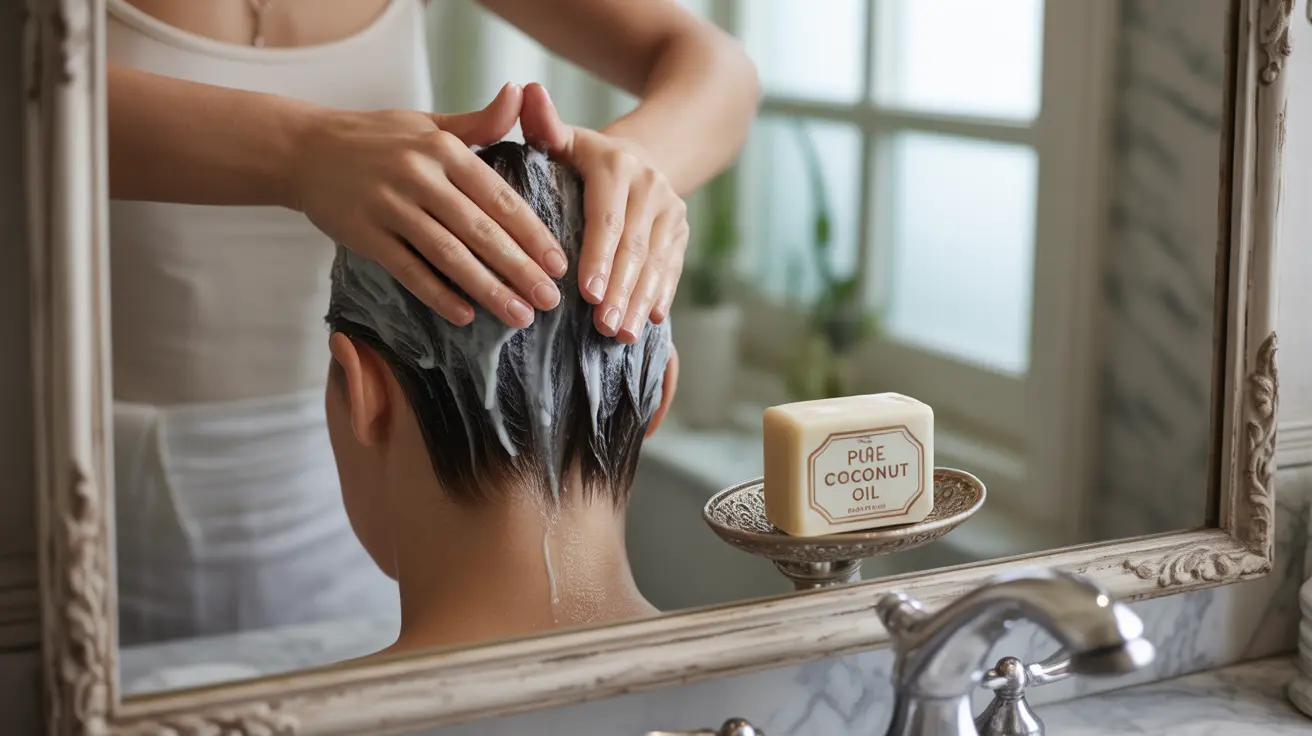For those struggling with a flaky, itchy scalp, coconut oil presents a natural alternative that's gained significant attention for its potential anti-dandruff properties. This versatile oil, known for its antimicrobial and moisturizing qualities, may offer relief from persistent dandruff symptoms while nourishing the scalp.
Understanding how coconut oil works against dandruff and learning the proper application methods can help you determine if this natural remedy is right for your scalp care routine. Let's explore the science behind coconut oil's effectiveness and how to use it safely for managing dandruff.
How Coconut Oil Fights Dandruff
Coconut oil contains several compounds that make it potentially effective against dandruff. Its primary active component, lauric acid, has demonstrated antimicrobial properties that may help combat the fungus Malassezia, a common cause of dandruff. Additionally, the oil's moisturizing capabilities can help soothe dry, flaky skin on the scalp.
The medium-chain fatty acids in coconut oil can penetrate the hair shaft and scalp, providing deep moisturization while potentially reducing inflammation associated with dandruff. This dual action of fighting fungal growth while maintaining scalp hydration makes it a promising natural treatment option.
Proper Application Methods
Pre-Treatment Preparation
Before applying coconut oil to your scalp, ensure the oil is slightly warm but not hot. This helps improve absorption and makes the application process more comfortable. You can warm the oil by placing the container in warm water or gently heating it between your palms.
Application Steps
- Part your hair into sections to ensure even distribution
- Apply warm coconut oil directly to your scalp using your fingertips
- Gently massage the oil into your scalp for 5-10 minutes
- Leave the treatment on for at least 30 minutes or overnight
- Wash thoroughly with a mild shampoo
Scientific Evidence and Effectiveness
Research suggests that coconut oil's antimicrobial properties may help control the growth of dandruff-causing fungi. Studies have shown that the lauric acid in coconut oil can penetrate the cell walls of microorganisms, potentially helping to reduce their population on the scalp.
However, it's important to note that while coconut oil shows promise, its effectiveness may vary among individuals. Some people might see significant improvement, while others may need to combine it with other treatments for optimal results.
Potential Benefits and Limitations
Benefits
- Natural and generally safe for most people
- Moisturizes the scalp
- Contains antimicrobial properties
- May reduce inflammation
- Cost-effective compared to specialized treatments
Limitations
- Results may take time to become noticeable
- May not be as effective as medicated treatments for severe cases
- Can be too heavy for some hair types
- Might require frequent application for maintenance
Frequently Asked Questions
Can coconut oil effectively treat dandruff and reduce scalp flakiness?
Yes, coconut oil can help treat dandruff and reduce scalp flakiness due to its antimicrobial and moisturizing properties. However, effectiveness varies among individuals, and severe cases may require additional treatment methods.
How should I apply coconut oil to my scalp to help with dandruff?
Apply warm coconut oil directly to your scalp in sections, massage gently for 5-10 minutes, and leave it on for at least 30 minutes or overnight before washing. Regular application, typically 2-3 times per week, may provide the best results.
Does coconut oil help address the fungal causes of dandruff like Malassezia?
Yes, coconut oil contains lauric acid and other compounds that have antifungal properties, which may help combat Malassezia, a common fungal cause of dandruff. However, severe fungal infections may require prescribed antifungal treatments.
What are the benefits and limitations of using coconut oil compared to medicated dandruff shampoos?
Coconut oil offers natural moisturizing and antimicrobial benefits without harsh chemicals, but it may work more slowly and be less effective than medicated shampoos for severe dandruff. It's best used as part of a comprehensive scalp care routine or for mild cases.
Are there any risks or side effects of using coconut oil on the scalp for dandruff?
While coconut oil is generally safe, some people may experience allergic reactions or increased oiliness. It can also clog hair follicles if used excessively. Start with a small amount and discontinue use if irritation occurs.




